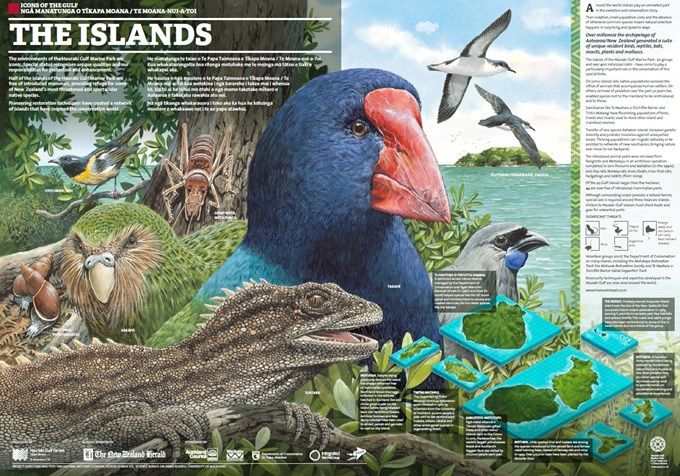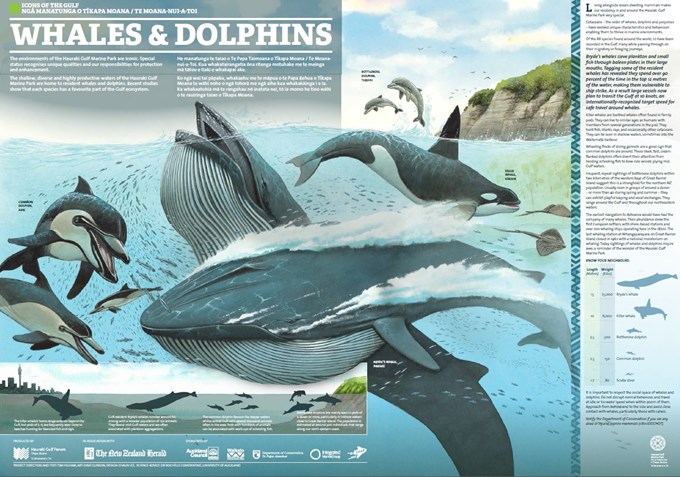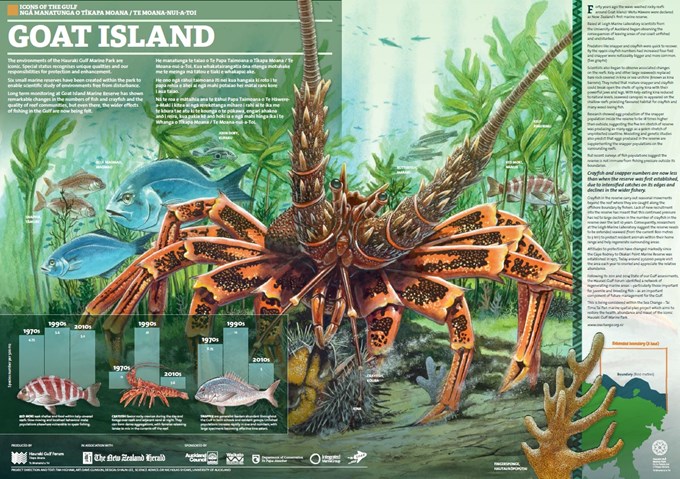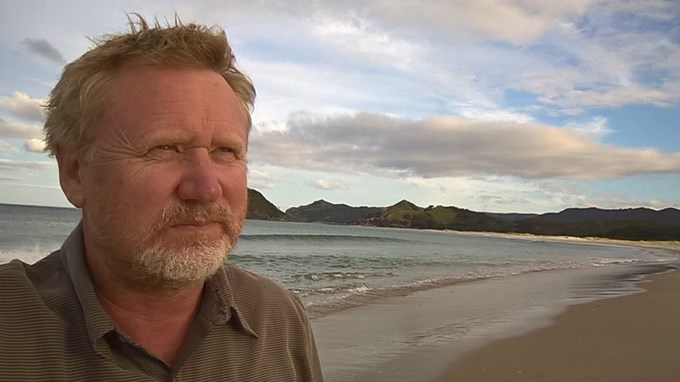Coming up with three compelling and visual stories about the gulf has become a summer ritual for the Hauraki Gulf Forum’s Executive Officer, Tim Higham.
He packs his laptop and spends January working from his solar-powered bush block home on Great Barrier Island, commissioning original art, design and expert advice to create posters that celebrate the marine park.
Next week the New Zealand Herald will publish a sixth poster series, Icons of the Gulf, in partnership with the Hauraki Gulf Forum.
The forum comprises agencies and tangata whenua representatives that promote the Hauraki Gulf Marine Park Act.
Gulf islands becoming pest free

This year’s series starts with a celebration of our islands – nearly half of the 93 islands over 5ha are now free of introduced mammalian pests, and have become sanctuaries for native birds, insects and reptiles.
“Artist Dave Gunson has created a Star Wars feel with the heads of takahē, kākāpō, hihi, tuatara and others emerging from the island's forest canopy,” says Tim.
“The text highlights the growing network of islands being liberated from predators and releasing restorative potential.
“This success – enjoyed by hundreds of thousands of island visitors each year – reflects the efforts of Auckland Council’s biosecurity team through the Treasure Islands programme with the Department of Conservation, assisted by many volunteer community groups.”
Whales and dolphins in our gulf

The second poster profiles the whales and dolphins that live in the gulf. Recent surveys and research by University of Auckland scientists shows each – the killer whale, Bryde’s whale, common dolphin and bottlenose dolphin – favours a different part of the gulf ecosystem. This new knowledge has helped gulf users, like the shipping sector, to operate around whales and reduce the risk of ship strike.
“I usually see bottlenose dolphins when kayaking around the western harbours on Great Barrier,” says Tim.
“The research shows this is a stronghold for the species, with frequent, repeat sightings of the same individuals and pods.”
Species under threat

Perhaps most surprising – and alarming – is the result of recent monitoring at the Goat Island marine reserve near Leigh, which features in the third poster.
After dramatic recovery in the numbers of crayfish and snapper in its first two decades, numbers are now less than when it was established in 1975, due to intensified catches on its edges and declines in the wider fishery.
Large crayfish and snapper are effective kina eaters and their recovery is linked to the return of seaweed canopies, and associated species, to shallow reefs inside the reserve. This relative abundance attracts over 350,000 visitors to the marine reserve each year.
“To me the posters illustrate what makes Auckland special, what differentiates it in the world and creates the X-factor liveability that we cherish," says Tim.
"They also show that we cannot be complacent and the council’s investments in protection and enhancement and in the Sea Change Tai Timu Tai Pari marine spatial plan process are both timely and necessary."
Māori names show connections
Te reo Māori is an added dimension to the posters this year, thanks to the assistance of translators from Auckland Council’s Māori strategy and relations department, Te Waka Angamua.
“Discovering the Māori names for the animals – for example kākahi (killer whale), pakakē (Bryde’s whale), aihe (common dolphin) and terehu (bottlenose dolphin) – provides added insight to the depth of our connections to the natural world.”
The three posters will appear free in the New Zealand Herald on 22, 23 and 24 February, and are also provided to all schools in the region through the council’s Education for Sustainability programme.


